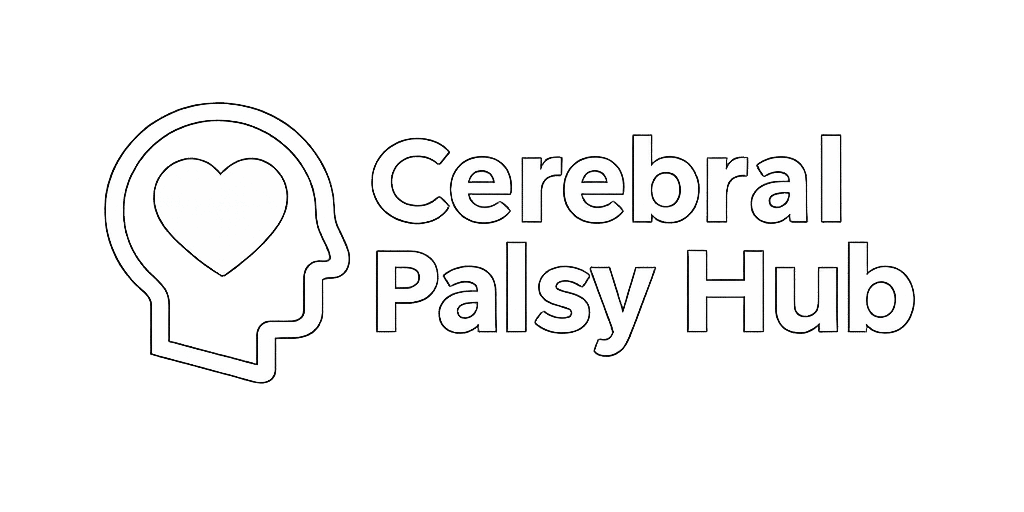Hypotonic Cerebral Palsy
Hypotonic cerebral palsy is one of the least common types of cerebral palsy, but it can significantly affect a child’s movement and daily abilities. It results from brain damage that disrupts control of muscle tone, leading to unusual floppiness and weakness. Recognizing its causes, symptoms, and treatment options can help families better support their child’s development and quality of life.
What Is Hypotonic Cerebral Palsy?
Hypotonic cerebral palsy (CP) is a form of CP characterized by abnormally low muscle tone, known as hypotonia. Children with this type often feel limp, sometimes described as “ragdoll-like,” because their muscles cannot provide the tension needed for stable movement.
This lack of resistance makes it difficult to sit upright, hold the head steady, or walk without assistance. Unlike spastic CP, where muscles are overly stiff, hypotonic CP is marked by weakness and loose joints. Because of these challenges, daily activities often require extra effort and support.
What Causes Hypotonic Cerebral Palsy?
Hypotonic cerebral palsy occurs when parts of the brain that regulate posture, coordination, and muscle control are damaged. The cerebellum, located at the back of the brain, is commonly involved. This region plays a key role in balance and smooth movement.
When the cerebellum or its connections are injured, messages to the muscles become weak or poorly regulated. As a result, the muscles do not contract with normal strength, leaving the body without the support it needs for movement.
In some cases, widespread brain injury can also contribute to hypotonia, affecting multiple areas of motor control.
Hypotonic Cerebral Palsy Risk Factors
Certain factors increase the likelihood of developing hypotonic cerebral palsy by making the brain more vulnerable to injury. These risks can occur before birth, during delivery, or in the newborn stage.
Potential risk factors include:
-
Premature birth: Babies born too early often have underdeveloped brains that are more fragile and prone to damage affecting muscle control. The earlier the birth, the higher the risk.
-
Low birth weight: Infants under 5.5 pounds may have less developed nervous systems, making them more susceptible to motor problems and hypotonia.
-
Genetic or metabolic disorders: Some inherited conditions can weaken the brain or muscles, increasing the likelihood of hypotonic CP.
-
Maternal health complications: Issues such as thyroid disorders, diabetes, or infections during pregnancy can interfere with brain development.
-
Lack of oxygen at birth (hypoxia): Reduced oxygen flow to the brain during labor or delivery can injure areas that control balance and tone.
-
Infections in pregnancy or early infancy: Certain viral or bacterial infections may trigger inflammation and damage to brain tissues.
-
Severe neonatal jaundice: High bilirubin levels can harm brain cells if left untreated, contributing to hypotonia.
Having one or more risk factors does not mean a child will develop hypotonic cerebral palsy, but it may raise the chances.
Signs & Symptoms
The primary sign of hypotonic CP is low muscle tone, which creates floppiness and poor stability. Children may seem weaker than expected for their age and struggle to hold or move their bodies in typical ways.
Developmental milestones like rolling, sitting, and walking are usually delayed. Speech and feeding difficulties may also appear due to weak facial and oral muscles. Fatigue is also another common symptom because movement requires extra effort.
Additional symptoms may include:
-
Poor head and neck control
-
Loose, overly flexible joints
-
Weak reflexes or reduced protective responses
-
Trouble maintaining posture without support
-
Difficulty chewing, swallowing, or speaking
Subtypes of Hypotonic CP
Doctors may describe hypotonic cerebral palsy based on the areas of the body most affected. While not as clearly divided as spastic CP subtypes, classifications often overlap with broader CP patterns:
-
Hypotonic Diplegia – mainly affects the legs, making standing and walking especially difficult.
-
Hypotonic Hemiplegia – impacts one side of the body, with weaker muscles on either the left or right.
-
Hypotonic Quadriplegia – involves all four limbs, often leading to the most significant motor delays.
Because hypotonic CP is less common, these subtypes are not as widely used but can help guide treatment planning.
Even children with higher severity levels can improve with physical therapy and adaptive equipment.
Diagnosis
Diagnosis usually begins with noticing floppiness or poor muscle control in infancy. Doctors check tone, reflexes, and developmental progress.
Brain imaging such as MRI scans can confirm injury to the cerebellum or other motor-control areas. Blood tests and genetic screening may be done to rule out other causes of hypotonia.
Tracking developmental milestones is important for determining whether low tone is temporary or related to cerebral palsy. Early detection allows therapy to begin at the most effective stage.
Complications & Associated Conditions
Hypotonic CP can lead to secondary health challenges if left untreated. Because muscles are weak, joints may become unstable, and scoliosis can develop from poor posture. Feeding problems may result in poor nutrition or growth delays. Children may also experience speech difficulties, vision or hearing problems, and seizures, depending on the extent of brain injury.
Common complications include:
-
Joint instability or dislocation
-
Scoliosis or spinal curvature
-
Feeding and swallowing difficulties
-
Developmental delays in speech and language
-
Seizures or sensory impairments
Addressing complications early helps prevent further health problems.
Treatment & Management
There is no cure for hypotonic cerebral palsy, but treatments can strengthen muscles, improve function, and support independence. A combination of therapies and adaptive strategies is usually recommended. Care plans are individualized based on each child’s needs.
Key treatments include:
Physical Therapy
Physical therapy is essential for building muscle strength, improving posture, and teaching movement skills. Exercises may focus on sitting balance, walking practice, and core stability. Water therapy may also be used to make movements easier in a supportive environment.
Occupational Therapy
Occupational therapy helps children learn everyday skills like dressing, feeding, and writing. Therapists may recommend adaptive tools to make tasks easier and less tiring. Fine motor exercises can improve hand strength and coordination.
Speech & Feeding Therapy
Speech therapy strengthens oral muscles to improve communication and safe swallowing. Early intervention is especially important for children with feeding difficulties to avoid malnutrition.
Orthotic Devices
Braces, supportive seating, and mobility aids help stabilize weak joints and improve alignment. These tools can make walking or sitting more comfortable and safe.
Medications & Surgery
While medications are less central in hypotonic CP compared to spastic CP, they may be used for associated conditions like seizures. In rare cases, surgery may be recommended to correct orthopedic problems caused by joint instability.
Daily Life Impact & Prognosis
Hypotonic cerebral palsy affects every aspect of daily life, from movement to communication. Children may tire more quickly and require help with self-care tasks. With therapy, many can improve strength and independence, but some will need lifelong support. The prognosis depends on severity and whether other complications are present.
Despite challenges, many people with hypotonic CP lead fulfilling lives with the right support. Family involvement, early therapies, and adaptive equipment all play a vital role in improving quality of life.
Legal & Financial Resources
Families of children with hypotonic cerebral palsy may qualify for disability benefits, special education services, and financial aid for therapy and equipment. These programs help reduce the burden of ongoing medical costs.
In some cases, CP may result from medical negligence during pregnancy or delivery. Legal action may help secure compensation to cover therapy, medical care, and long-term support.
Hypotonic Cerebral Palsy FAQs
 Written and Medically Reviewed by:
Written and Medically Reviewed by:
Cerebral Palsy Hub Team
Cerebral Palsy Hub was founded to help support children and their families with cerebral palsy and to create a safe space for those affected. We strive to provide the most accurate, up-to-date information, and tools to help give your child the life they deserve.
Last Updated: September 2, 2025
